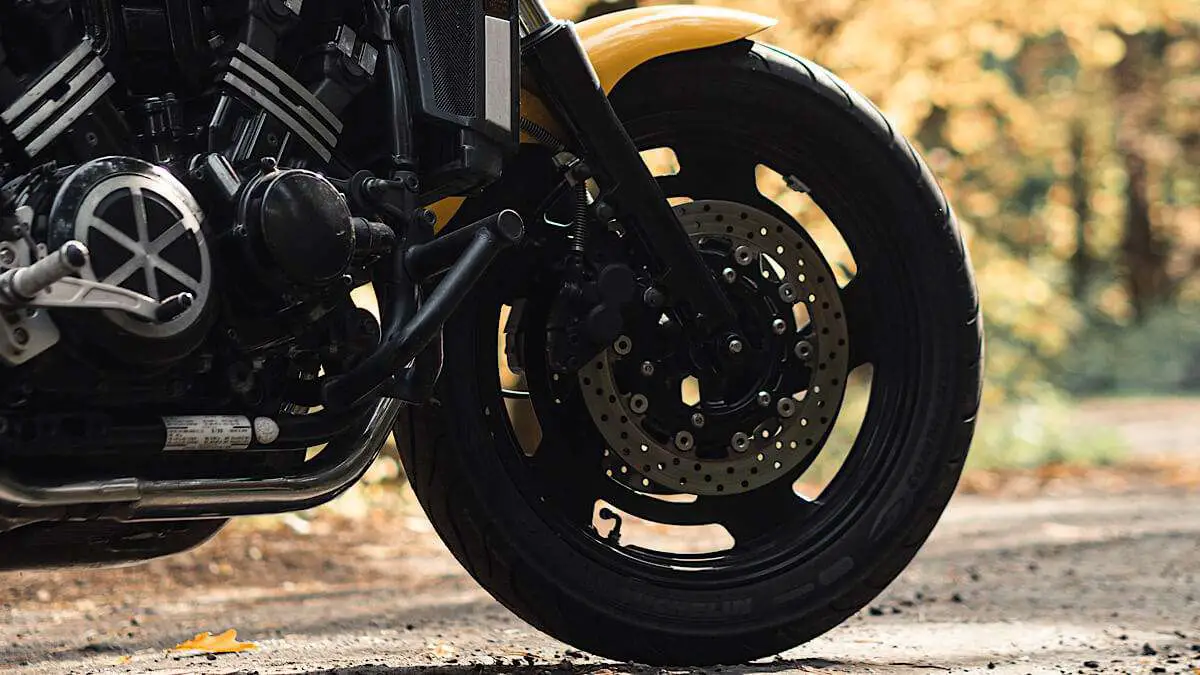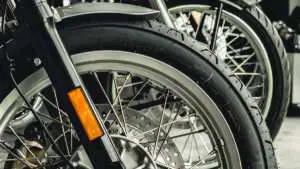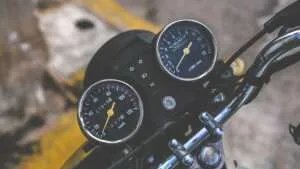Contents
As riders, one of the last things we want is a flat tire – especially not one when we’re doing over 60 miles an hour. Interestingly enough, I’ve had two punctures in the last three months alone. The first one was when I was joining a freeway, but right before I sped up, a fellow rider waved me down.
A month later on a beautiful early Sunday morning, I grabbed my keys from the bedside table, ready to head out and there it was – a very flat rear tire. It’s even scarier when I realized I could’ve been riding on a punctured tire for most of my cruise the night before.
The point is, apart from the frustration, both of these punctures could’ve ended way worse than they did and each time, I had no idea I was riding on a flat tire (hate to be cliche but riding is blissful).
The even bigger point is that I realized I really need a tire pressure management system or TPMS, and most of you probably do as well. But which TPMS to buy in 2020? There is no shortage of options and the price varies quite a bit too. So here’s your guide on the best tire pressure management system or the best tire pressure gauge in 2020. We’ll also go over things to consider as well as the different motorcycle TPMS reviews.


Things to Consider Before Choosing a TPMS
Look Out For Counterfeits
There are a ton of counterfeit TPMS on sites like eBay and while not all of them are bad, I don’t think saving a few bucks is worth the additional risk of doing 80 miles an hour on a failed tire and these counterfeit tire pressure monitoring systems do fail. One of my buddies pulled over just to see a nearly ruined tire all the while his LCD display gave him the good old “thumbs up!” – oof.
Battery Type
Say you drop a $100 or more on a TPMS and when the time comes to replace the battery, you notice that you can’t! You’ll be infuriated and rightly so because you now need to buy new sensors. Save yourself the trouble by buying systems that come with user-replaceable batteries (the kind of the batteries that go into watches).
Waterproofing Is A Requirement, Not A Bonus
Many of the TPMS kits you see on the internet, including the ones I’ve mentioned here advertise themselves as “weather-proof” or “waterproof” or “dustproof”. But here’s the thing – they’re all waterproof. Waterproofing is a requirement of a good TPMS but a bonus so don’t get swayed by the BS marketing.
Not All TPMS Will Fit Your Motorcycle
This one’s a biggie. Nearly all internal sensors will fit without any problems but most TPMS use an external sensor that may or may not fit your bike. So before pulling the trigger on your purchase, do due diligence to make sure you won’t have to do any additional grinding or drilling to make it fit perfectly.
Now that that is out of the way, let’s go to the main event – the reviews.
#1: The Wireless Option: FOBO Bike 2 TPMS
The first thing you notice with the FOBO Bike 2 TPMS is that there is no LCD display inside the box.
No, they did not forget to send you the LCD display – it’s just not there.
The Fobo TPMS motorcycle system uses Bluetooth 5.0 (but works with Bluetooth 4.0 as well) and can connect with not just your smartphone, but also your smartwatch. The lack of the LCD display seemed a bit odd at first but I realized it’s not that bad because of the number of features the FOBO Bike 2 has.
Features
- Simple iOS and Android apps that get the job done.
- Connects to smartwatches through Bluetooth as well
- Sends instant audio, haptic and text alerts
Cons
- The lack of an LCD display might be a dealbreaker for some.
- Price. It’s nearly double the price of some other really good tire pressure monitoring systems.
Verdict: The FOBO Bike 2 makes the most sense for people who do not want a square metal block (LCD display) taking up any space on their beautiful instrumental cluster. I think the smartphone app and Bluetooth connectivity with the smartwatch work well enough for me to not miss the LCD display (wasn’t much of a fan of it anyway).
#2: The Best Value: CAREUD Motorcycle TPMS
No products found.
No products found.
At nearly half the price of the FOBO Bike 2, the CAREUD Motorcycle TPMS gives you what the FOBO didn’t – an LCD display.
And the best part is, it’s not too shabby looking. The LCD display that comes with the CAREUD TPMS looks clean and modern (it’s completely black). In other words, it didn’t look too out of place on a motorcycle.
Features
- It comes with an anti-theft mechanism.
- Offers exceptional value for money
Cons
- Cannot connect to your smartphone
- The LCD Display needs a charge every once in a while (comes with a USB cable).
Verdict: If you’re on a budget and just need a TPMS that will show you the tire pressure and temperature accurately without any bells or whistles, the CAREUD Motorcycle TPMS is the one for you.
#3: A Great Alternative: RUPSE TPMS
No products found.
No products found.
Another tire pressure monitoring system that is very reliable and comes with no fancy bells or whistles (or gimmicks, depending on how you want your TPMS), is the RUPSE TPMS. It’s a bit more expensive than the CAREUD Motorcycle TPMS but extremely reliable.
Features
- A backlit screen means you won’t have problems in the day or at night.
- It looks and feels solid.
Cons
- More expensive than the CAREUD Motorcycle TPMS
- The design looks outdated (to me, at least).
Verdict: Though the RUPSE TPMS is an excellent tire pressure gauge, the only time I would suggest you get this over the other two is if this is the only TPMS that will fit your motorcycle nicely or if you really like the simple design.
But wait! Before you close this tab and buy yourself one of these TPMS, I need to tell you something…
What Yoda is trying to tell you is that there is a whole other type of tire pressure monitoring systems for motorcycles.
Choosing The Right TPMS: External vs. Internal Sensors
No products found.
The tire pressure gauges mentioned above all use external sensors but as Yoda says, there is another.
You see, there are two types of TPMS, the first one uses an external pressure sensor that fits directly to the valve stem and the other one uses an internal pressure sensor that fits inside the rim of your tire. So which one should you get?
Advantages of Internal Sensors
Discreet Looks
Though the name is a bit of a giveaway, internal sensors fit inside the rim which means they are very discreet and there are unusual protrusions on your beautiful aftermarket wheels.
That said, most TPMS come with a digital LCD display that is fitted on the instrument cluster of your motorcycle so there will be unusual protrusions somewhere on the motorcycle unless you opt for a tire pressure gauge that connects to your smartphone or smartwatch, but more on that later.
More Accurate Readings
The tire pressure monitoring systems in this article all show temperatures as well as tire pressure and both of these metrics, both of which can be altered by weather elements – but not with internal sensors. Sensors inside the rim are well-protected by any weather element which means the readings you get are as accurate as they can be.
Cannot Be Stolen
Another benefit of an internal sensor is that it’s impossible for someone to steal your tire pressure gauge while “the bike parked outside a cafe and you’re enjoying a delicious evening meal” – words of one of my buddies. Literally, everything gets stolen so I won’t be surprised if people try to steal pressure gauges as well.
Easier to Inflate The Tires
Internal sensors leave the valve stem free so you can inflate the tires without removing anything. But the benefits of internal sensors end here.
Disadvantages of Internal Sensors
Expensive
More discreet, more accurate, and cannot be stolen – of course internal sensors were going to be expensive. That said, they’re not crazy expensive – just more expensive relative to their external counterpart.
Difficult Installation
Installing a sensor internally means you don’t have to remove the valve stem. No, you have to take the entire wheel off. Needless to say, this might be more work than some of you anticipated (myself included).
Difficult Maintenance
The inconvenience with internal sensors doesn’t stop at the installation, if the sensor ran out of battery or required some other maintenance, you’ll have to remove the wheel again. That said, most internal sensors should be good for at least a few years (but then again, you never know).
Advantages of External Sensors
Inexpensive
You probably saw this one coming – they’re cheaper.
Easier to Install
Installation doesn’t require taking off the wheel which is a victory in my books.
Easier to Maintain
Batteries can be changed with the least amount of work? Another victory.
Disadvantages of External Sensors
Can Be Stolen*
This a big one for most people but before you completely write off external sensors, wait. There is an asterisk.
A lot of external sensors come with a locking mechanism that means only special tools (that come in the box) can be used to install or remove the sensor.
Protrude Out
Apart from not scoring any points in the design department, external sensors also run the risk of not fitting probably on the valve stem – so check the dimensions before buying.
Replace The Valve Stem Plastic Cap
You’ll have to remove the sensor every time you need to inflate the tire.
Readings Less Accurate
The accuracy of the readings cannot be guaranteed due to weather elements.
Conclusion
So there you have it – everything you need to know to order a tire pressure management system for your motorcycle that gives you more confidence on the road, gets rid of the conveniences (and ruined tires), and most importantly, keeps you safe on the road.
If I missed something out, be sure to let me know in the comments and I would love to hear your experience with these TPMS.



 Do Lithium Motorcycle Batteries Need a Special Charger?
Do Lithium Motorcycle Batteries Need a Special Charger?  Can A Rear Motorcycle Tire Be Used On The Front?
Can A Rear Motorcycle Tire Be Used On The Front?  Are Speedometers Required on Motorcycles?
Are Speedometers Required on Motorcycles?  Avoid Theft with the Best Motorcycle Alarm with Remote Start
Avoid Theft with the Best Motorcycle Alarm with Remote Start
You made a good point that checking the battery type is important when buying a TPMS for my motorcycle. I’ve always wanted to explore the nearby woods in my town with my motorcycle but I’m king of wary of traversing its uneven paths. Perhaps buying a TPMS would help me gauge if the undeveloped roads has a negative impact on my tire pressure.